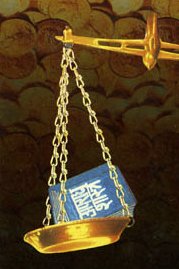Nitivakyamrita, Nītivākyāmṛta: 6 definitions
Introduction:
Nitivakyamrita means something in Hinduism, Sanskrit. If you want to know the exact meaning, history, etymology or English translation of this term then check out the descriptions on this page. Add your comment or reference to a book if you want to contribute to this summary article.
The Sanskrit term Nītivākyāmṛta can be transliterated into English as Nitivakyamrta or Nitivakyamrita, using the IAST transliteration scheme (?).
In Hinduism
Arthashastra (politics and welfare)
Source: Shodhganga: Rajadharma in the MahabharataNītivākyāmṛta (नीतिवाक्यामृत).—The Jaina writer Somadeva of tenth century A.D. writes a treatise on nīti is called Nītivākyāmṛta. He quotes fragments of the metrical works on polity attributed to Atri, Aṅgīras, Kauśika, Garga, Devala, Nārada, Parāśara, Bhāguri, Bhāradvāja, Bhṛgu, Bṛhaspati, Śukra, Vyāsa etc.
Source: Knowledge Traditions & Practices of India: Indian Ethics: Individual and SocialNītivākyāmṛta (नीतिवाक्यामृत) is the name of a text dealing with ethics and ethical values (nītiśāstra), attributed to Somadeva Suri. The Nītivākyāmṛta (literally the “nectar of science of polity”) contains thirty-two
discourses in simple Sanskrit prose by a Jain scholar, Somadeva Suri.

Arthashastra (अर्थशास्त्र, arthaśāstra) literature concerns itself with the teachings (shastra) of economic prosperity (artha) statecraft, politics and military tactics. The term arthashastra refers to both the name of these scientific teachings, as well as the name of a Sanskrit work included in such literature. This book was written (3rd century BCE) by by Kautilya, who flourished in the 4th century BCE.
Languages of India and abroad
Sanskrit dictionary
Source: Cologne Digital Sanskrit Dictionaries: Aufrecht Catalogus Catalogorum1) Nītivākyāmṛta (नीतिवाक्यामृत) as mentioned in Aufrecht’s Catalogus Catalogorum:—śv. by Somadeva Sūri. Report. Xlvii. Quoted by Mallinātha on Kirātārjunīya 1, 2. 4. 26.
2) Nītivākyāmṛta (नीतिवाक्यामृत):—[dharma] by Somadeva Sūri. Ulwar 1375.
Source: Cologne Digital Sanskrit Dictionaries: Monier-Williams Sanskrit-English DictionaryNītivākyāmṛta (नीतिवाक्यामृत):—[=nīti-vākyāmṛta] [from nīti-vākya > nīti > nī] n. Name of [work]
[Sanskrit to German]
Sanskrit, also spelled संस्कृतम् (saṃskṛtam), is an ancient language of India commonly seen as the grandmother of the Indo-European language family (even English!). Closely allied with Prakrit and Pali, Sanskrit is more exhaustive in both grammar and terms and has the most extensive collection of literature in the world, greatly surpassing its sister-languages Greek and Latin.
See also (Relevant definitions)
Partial matches: Vakyamrita, Niti.
Query error!
Full-text: Somadevasuri.
Relevant text
Search found 9 books and stories containing Nitivakyamrita, Niti-vakyamrita, Nīti-vākyāmṛta, Niti-vakyamrta, Nītivākyāmṛta, Nitivakyamrta; (plurals include: Nitivakyamritas, vakyamritas, vākyāmṛtas, vakyamrtas, Nītivākyāmṛtas, Nitivakyamrtas). You can also click to the full overview containing English textual excerpts. Below are direct links for the most relevant articles:
Yasastilaka and Indian culture (Study) (by Krishna Kanta Jandiqui)
Appendix 1 - Somadeva and the Pratihara court of Kanauj
Part 3 - Niti-shastras mentioned in the Yasastilaka < [Chapter 18 - Quotations nad References]
Manasollasa (study of Arts and Sciences) (by Mahadev Narayanrao Joshi)
2. The Seven Elements of State—Introduction < [Chapter 2 - Treatment of Political Theory and State Administration]
1. Introduction to Polity and Statecraft (according to the Manasollasa) < [Chapter 2 - Treatment of Political Theory and State Administration]
2.1. The element of the King, (Prabhu or Svamin) < [Chapter 2 - Treatment of Political Theory and State Administration]
Somadeva’s “Yasastilaka” < [July 1951]
Glories of India (Culture and Civilization) (by Prasanna Kumar Acharya)
Political economy (Artha-shastra) < [Chapter 6 - Practical sciences]
Shishupala-vadha (Study) (by Shila Chakraborty)
Spies in ancient Indian kingdoms (Introduction) < [Chapter 4 - Activities of spy]
Kautilya Arthashastra (by R. Shamasastry)